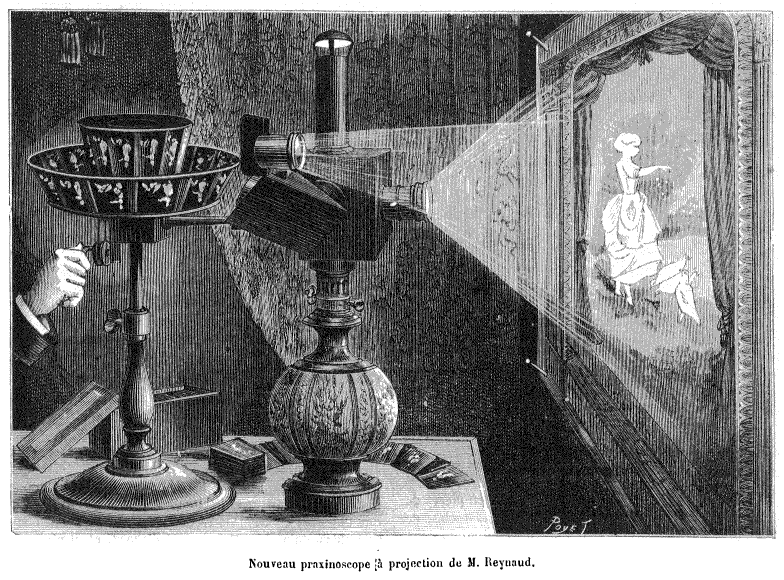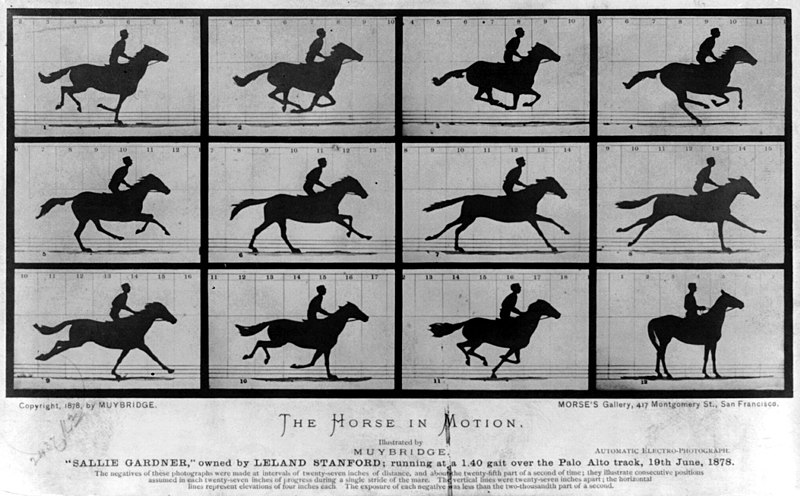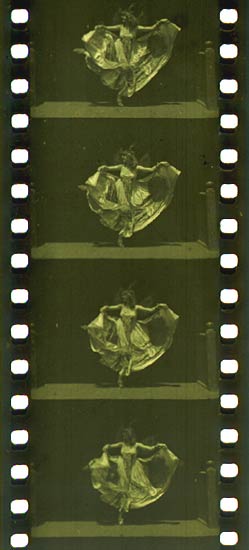Friday 28 January 2011
Aardman Animations, also known as Aardman Studios, or simply as Aardman, is an Academy Award-winning British animation studio based in Bristol, United Kingdom. The studio is known for films made using stop-motion clay animation techniques, particularly those featuring Plasticine characters Wallace and Gromit. However, it successfully entered the computer animation market with Flushed Away (2006).
Wednesday 26 January 2011
Friday 21 January 2011
 Joseph Plateau was born in Belgian. He was the first person to demonstrate the illusion of a moving image. To do this he used counter rotating disks with repeating drawn images in small increments of motion on one and regularly spaced slits in the other. He called this device of 1832 the phenakistoscope.
Joseph Plateau was born in Belgian. He was the first person to demonstrate the illusion of a moving image. To do this he used counter rotating disks with repeating drawn images in small increments of motion on one and regularly spaced slits in the other. He called this device of 1832 the phenakistoscope. Charles-Émile Reynaud , responsible for the first projected animated cartoon films. Reynaud created the Praxinoscope in 1877 and the Théâtre Optique in December 1888, and on 28 October 1892 he projected the first animated film in public, Pauvre Pierrot, at the Musée Grévin in Paris. This film is also notable as the first known instance of film perforations being used.His late years were tragic from 1910 when, crushed by the new Cinematograph, dejected and penniless, he threw the greater part of his irreplaceable work and unique equipment into the Seine as the public had deserted his "Théatre Optique" shows which had been a celebrated attracted at the Musée Grevin between 1892 and 1900.
Charles-Émile Reynaud , responsible for the first projected animated cartoon films. Reynaud created the Praxinoscope in 1877 and the Théâtre Optique in December 1888, and on 28 October 1892 he projected the first animated film in public, Pauvre Pierrot, at the Musée Grévin in Paris. This film is also notable as the first known instance of film perforations being used.His late years were tragic from 1910 when, crushed by the new Cinematograph, dejected and penniless, he threw the greater part of his irreplaceable work and unique equipment into the Seine as the public had deserted his "Théatre Optique" shows which had been a celebrated attracted at the Musée Grevin between 1892 and 1900. Eadweard J. Muybridge was an English photographer but lived in the United States. He is known for his pioneering work on animal locomotion which used multiple cameras to capture motion, and his zoopraxiscope, a device for projecting motion pictures that pre-dated the flexible perforated film strip.
Eadweard J. Muybridge was an English photographer but lived in the United States. He is known for his pioneering work on animal locomotion which used multiple cameras to capture motion, and his zoopraxiscope, a device for projecting motion pictures that pre-dated the flexible perforated film strip. The Kinetoscope is an early motion picture exhibition device. Though not a movie projector—it was designed for films to be viewed individually through the window of a cabinet housing its components—the Kinetoscope introduced the basic approach that would become the standard for all cinematic projection before the advent of video: it creates the illusion of movement by conveying a strip of perforated film bearing sequential images over a light source with a high-speed shutter.
The Kinetoscope is an early motion picture exhibition device. Though not a movie projector—it was designed for films to be viewed individually through the window of a cabinet housing its components—the Kinetoscope introduced the basic approach that would become the standard for all cinematic projection before the advent of video: it creates the illusion of movement by conveying a strip of perforated film bearing sequential images over a light source with a high-speed shutter.George Pal was a Hungarian-born American animator and film producer, principally associated with the science fiction genre. He became an American citizen after emigrating from Europe. He was nominated for Academy Awards in the category Best short subjects, Cartoon no less than seven consecutive years 1942–1948 and received an honorary award in 1944.
some of this source from wikipedia
Thursday 20 January 2011
we are going to do a music video for muse and the song we are going to do is supermassive black hole muse play Alternative rock, new prog, space rock, symphonic rock muse use a lot of lights flashing all the time and like to put a good show on muse try and target any age how likes there music but i would have to say 15 to 30
Monday 17 January 2011
Straight ahead action and pose to pose:
These are two different approaches to the actual drawing process. "Straight ahead action" means drawing out a scene frame by frame from beginning to end, while "pose to pose" involves starting with drawing a few, key frames, and then filling in the intervals later."Straight ahead action" creates a more fluid, dynamic illusion of movement, and is better for producing realistic action sequences. On the other hand, it is hard to maintain proportions, and to create exact, convincing poses along the way. "Pose to pose" works better for dramatic or emotional scenes, where composition and relation to the surroundings are of greater importance. A combination of the two techniques is often used.
Follow through and overlapping action:
These closely related techniques help render movement more realistic, and give the impression that characters follow the laws of physics. "Follow through" means that separate parts of a body will continue moving after the character has stopped. "Overlapping action" is the tendency for parts of the body to move at different rates an arm will move on different timing of the head and so on. A third technique is "drag", where character starts to move and parts of him take a few frames to catch up
Slow in and slow out:
The movement of the human body, and most other objects, needs time to accelerate and slow down. For this reason, an animation looks more realistic if it has more frames near the beginning and end of a movement, and fewer in the middle. This principle goes for characters moving between two extreme poses, such as sitting down and standing up, but also for inanimate, moving objects, like the bouncing ball in the above illustration
Arcs:
Most human and animal actions occur along an arched trajectory, and animation should reproduce these movements for greater realism. This can apply to a limb moving by rotating a joint, or a thrown object moving along a parabolic trajectory. The exception is mechanical movement, which typically moves in straight lines.
Secondary action:
Adding secondary actions to the main action gives a scene more life, and can help to support the main action. A person walking can simultaneously swing his arms or keep them in his pockets, he can speak or whistle, or he can express emotions through facial expressions. The important thing about secondary actions is that they emphasize, rather than take attention away from the main action. If the latter is the case, those actions are better left out.
Timing:
Timing refers to the number of drawings or frames for a given action, which translates to the speed of the action on film.On a purely physical level, correct timing makes objects appear to abide to the laws of physics; for instance, an object's weight decides how it reacts to an impetus, like a push. Timing is critical for establishing a character's mood, emotion, and reaction. It can also be a device to communicate aspects of a character's personality.
Exaggeration:
Exaggeration is an effect especially useful for animation, as perfect imitation of reality can look static and dull in cartoons. The level of exaggeration depends on whether one seeks realism or a particular style, like a caricature or the style of an artist. The classical definition of exaggeration, employed by Disney, was to remain true to reality, just presenting it in a wilder, more extreme form.
Solid drawing:
The principle of solid drawing means taking into account forms in three-dimensional space, giving them volume and weight. The animator needs to be a skilled draughtsman and has to understand the basics of three-dimensional shapes, anatomy, weight, balance, light and shadow etc.
Appeal:
Appeal in a cartoon character corresponds to what would be called charisma in an actor.A character who is appealing is not necessarily sympathetic — villains or monsters can also be appealing — the important thing is that the viewer feels the character is real and interesting.
Friday 14 January 2011
1.Squash and stretch
 The most important principle is "squash and stretch the purpose of which is to give a sense of weight and flexibility to drawn objects. It can be applied to simple objects, like a bouncing ball, or more complex constructions, like the musculature of a human faceTaken to an extreme point, a figure stretched or squashed to an exaggerated degree can have a comical effect.
The most important principle is "squash and stretch the purpose of which is to give a sense of weight and flexibility to drawn objects. It can be applied to simple objects, like a bouncing ball, or more complex constructions, like the musculature of a human faceTaken to an extreme point, a figure stretched or squashed to an exaggerated degree can have a comical effect.
 The most important principle is "squash and stretch the purpose of which is to give a sense of weight and flexibility to drawn objects. It can be applied to simple objects, like a bouncing ball, or more complex constructions, like the musculature of a human faceTaken to an extreme point, a figure stretched or squashed to an exaggerated degree can have a comical effect.
The most important principle is "squash and stretch the purpose of which is to give a sense of weight and flexibility to drawn objects. It can be applied to simple objects, like a bouncing ball, or more complex constructions, like the musculature of a human faceTaken to an extreme point, a figure stretched or squashed to an exaggerated degree can have a comical effect. 2. Anticipation Anticipation is used to prepare the audience for an action, and to make the action appear more realistic. A dancer jumping off the floor has to bend his knees first; a golfer making a swing has to swing the club back first. The technique can also be used for less physical actions, such as a character looking off-screen to anticipate someone's arrival, or attention focusing on an object that a character is about to pick up.[
Subscribe to:
Posts (Atom)